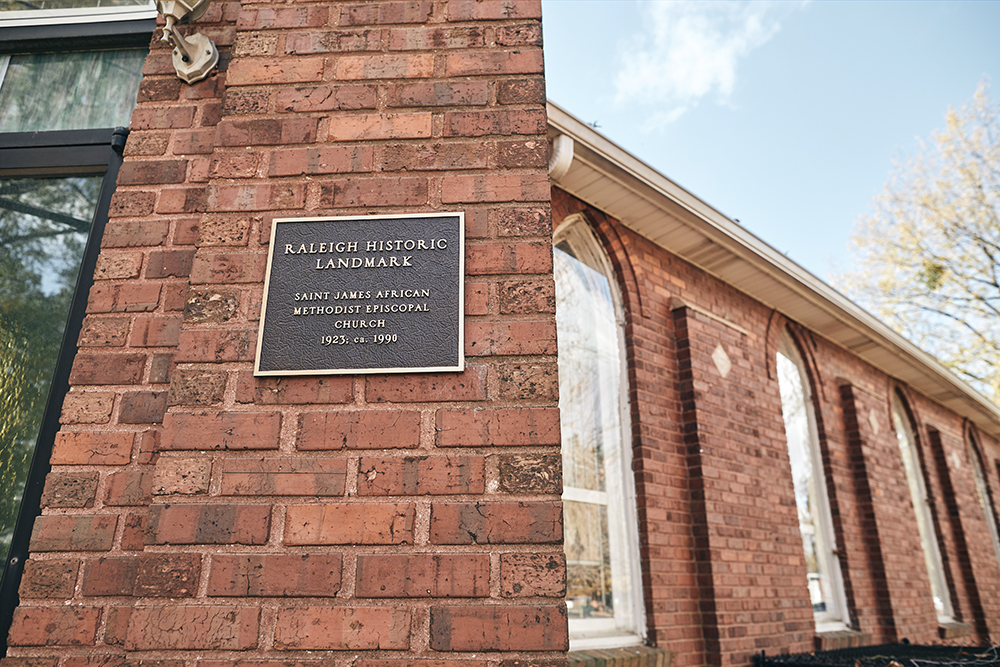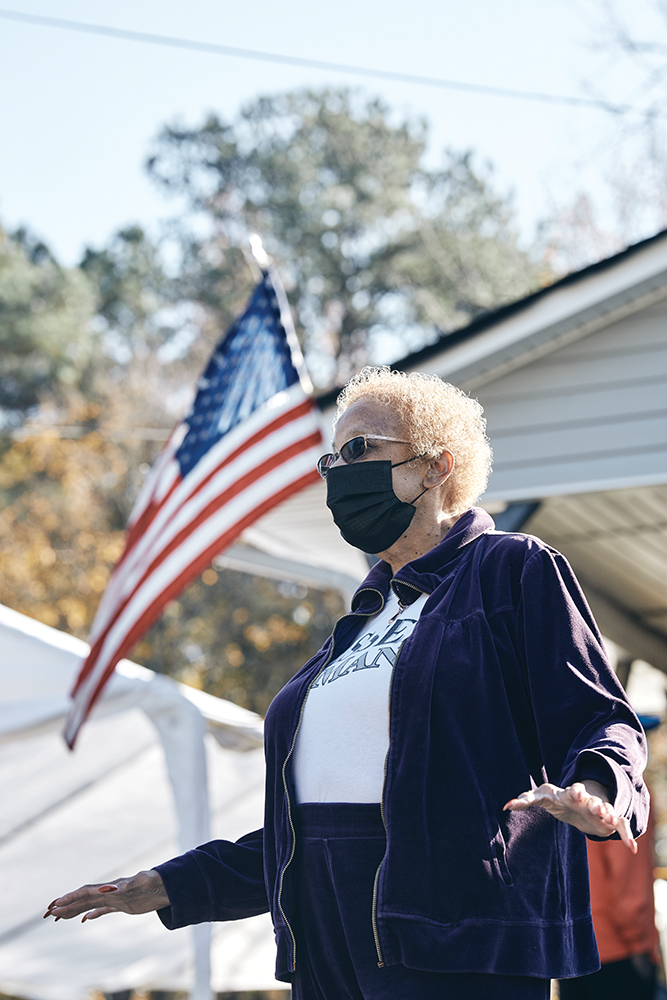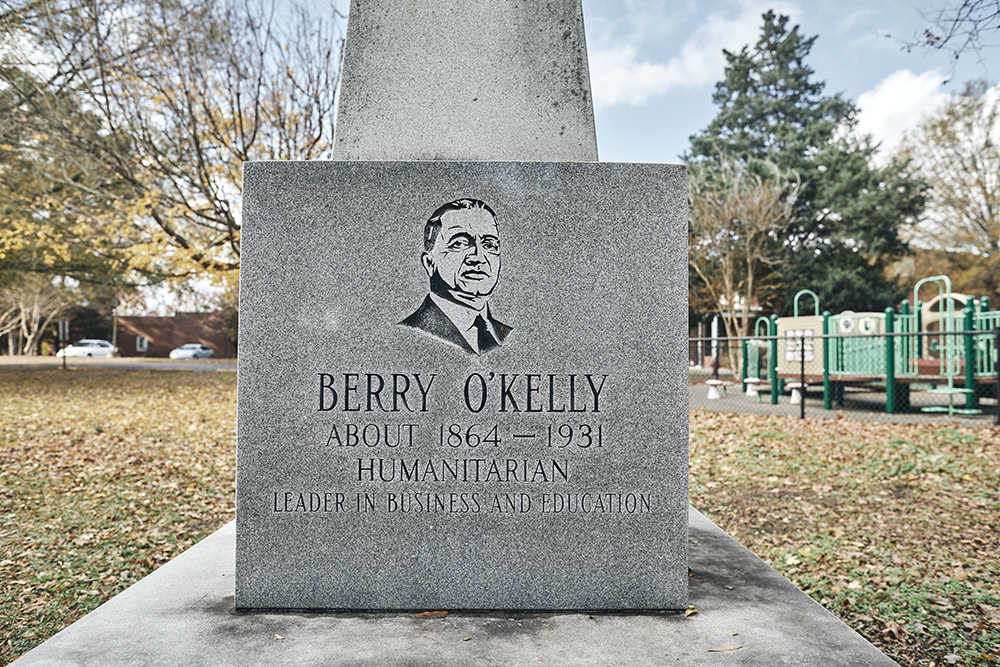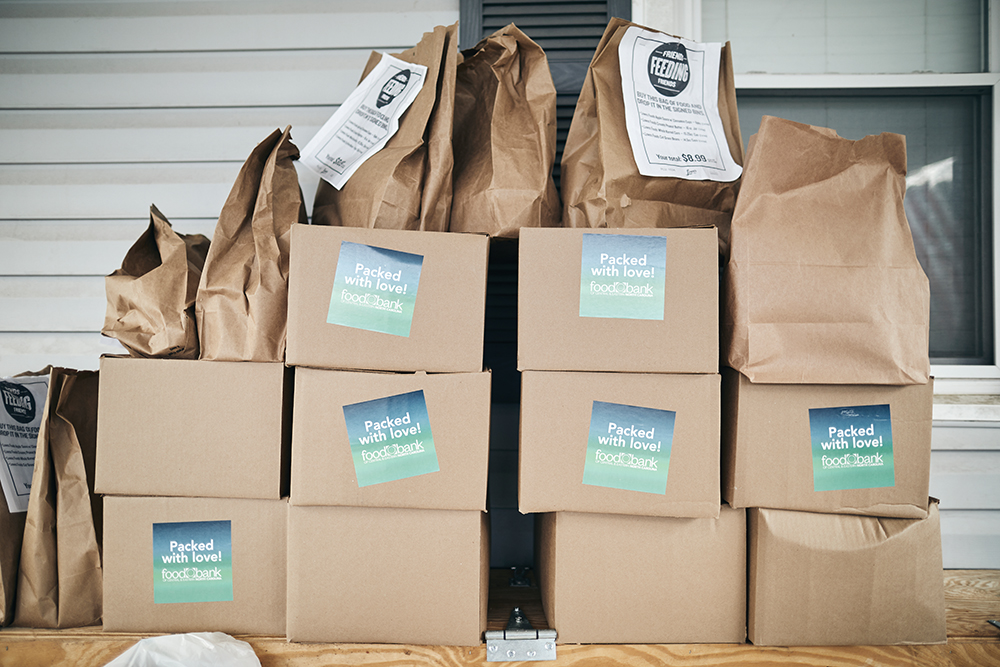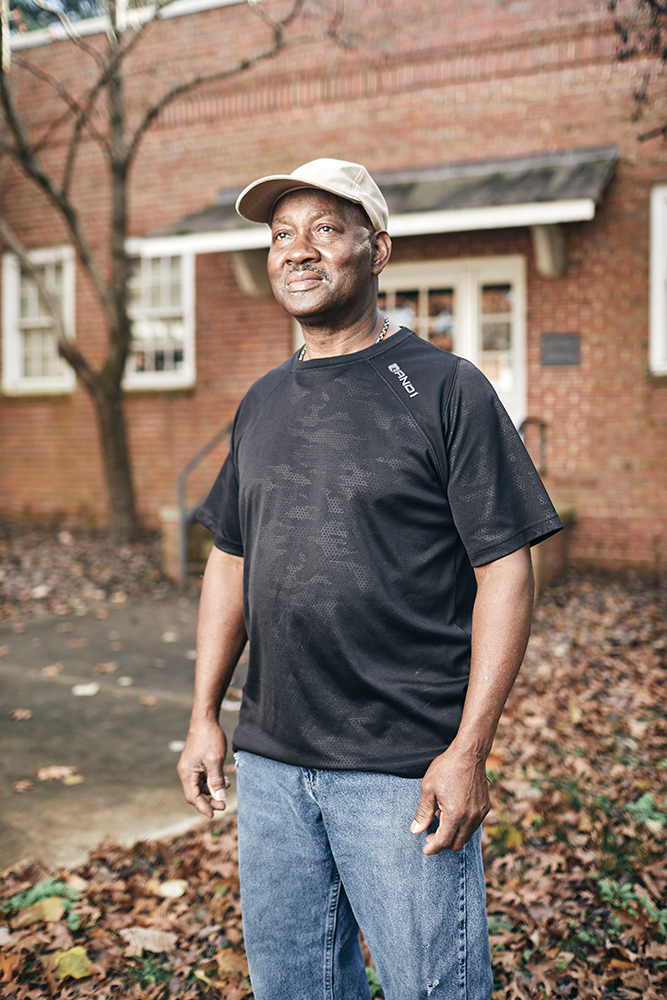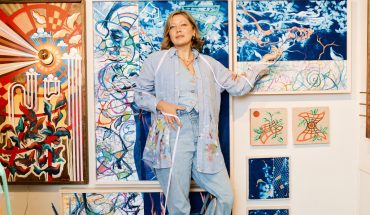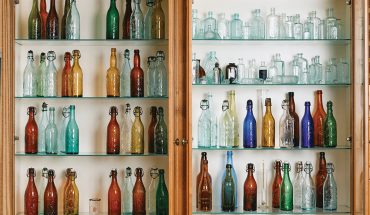For over 100 years, this neighborhood has stood strong, together.
by Courtney Napier | photography by Joshua Steadman
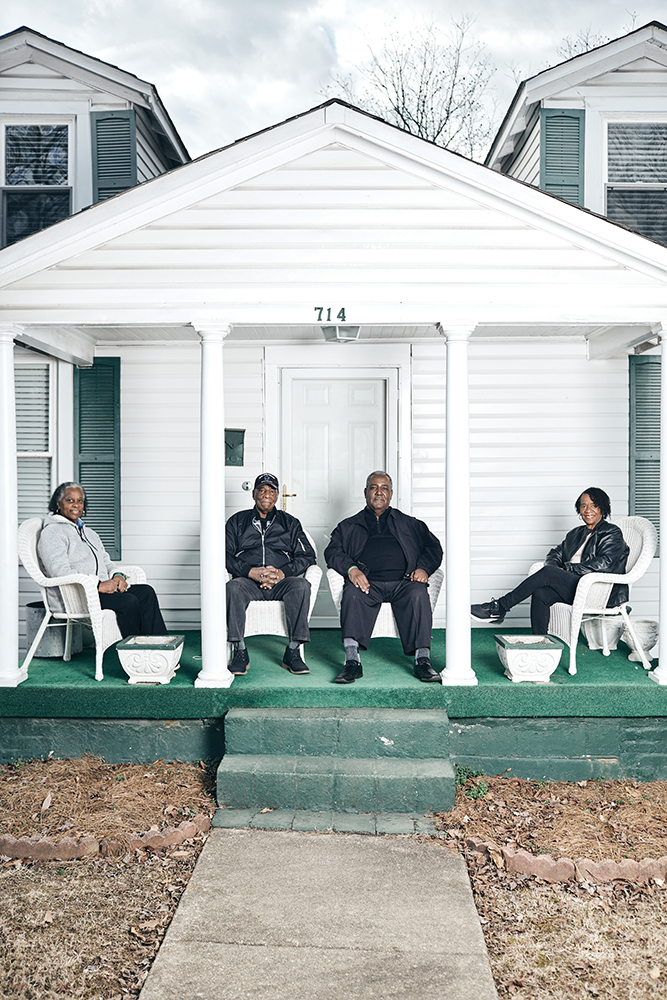
The autumn sun was high above trees adorned in golden leaves the first time I met Mr. Albert Crenshaw, last November. He walked with me toward Method Road from the home of his longtime friend, Mr. John Goode.
I followed Crenshaw’s lead as we cut a path behind the Raleigh Inter-Church Housing apartments. “This is the way we used to walk to school every morning,” he explained as we crossed Method Road and approached the historic grounds of the former Berry O’Kelly High School, now known as the Berry O’Kelly/Harveleigh White Method Community Center.
The Method neighborhood — hemmed in by North Carolina State University, Meredith College and the Beltline — is modest, as it has always been. Ranch-style homes boast various 1970s-era schemes: vinyl siding in mustard yellow or avocado green, and the ever-present red brick. Goode’s home, by contrast, is a fresh baby blue and white, with a front porch that stretches the full length of the facade, a preferred gathering space for family and friends.
On days like today, however, everyone gathers in the covered carport. A large white tent has been erected next to it, and it’s here that The Method Boys to Men Club — a group formed to be the neighborhood’s backbone, providing fellowship, advocacy, and support — prepares boxes of groceries and PPE to distribute to neighbors and local families.
Carving Out a Place
According to a report written for the Historic Raleigh Development Commission, the Method village was formed in 1872 by half-brothers Jesse Mason and Isaac O’Kelly, who purchased 69 mostly wooded acres two miles outside the Raleigh city limits from Confederate General William Ruffin Cox of Raleigh and Edgecombe County. Mason and O’Kelly parceled the land and sold lots to newly freed Black families, and by the turn of the century, Method held over fifty households. Its residents brought an assortment of trades and services; the town had two railroad stops, a grocery store, and its own post office.
Method went through many name changes. In the beginning, it was those outside the community that attempted to create its identity: The News & Observer and other white-led institutions referred to the earliest iterations of the community as “Slab Town,” “Planktown,” and “Save Rent.” These names referred to the small lots being sold to Black families avoiding the higher rent in downtown Raleigh and the slab-style homes, resembling log cabins, that were built on those lots. As the community grew, however, so did the desire for its own identity. The name “Masonville” was chosen to honor one of its founders and first pillars of the community, Jesse Mason.
One of its early residents, a 10-year-old Berry O’Kelly, moved from Chapel Hill to what was by then known as Mason’s Village in the 1870s to live with relatives after his mother had passed away. As a young man, O’Kelly worked for grocer Charles N. Wood and boarded in his home. Some years later, O’Kelly bought the grocery store from Wood. This marked the beginning of O’Kelly’s illustrious career as a businessman and his legacy as a leader; he also introduced the name Method Village, by which the neighborhood is still known today.
In 1894, O’Kelly donated a parcel of land for the purpose of building a school. Method already had three schools run by Wake County, but they dated back to Reconstruction and were in dire need of updating. In 1914, the Berry O’Kelly Training School was born, but its vision was not yet realized. The campus grew and the smaller schools were incorporated into a newer and larger complex that, with the support of Booker T. Washington and Julius Rosenwald of the Sears-Roebuck Foundation, expanded into a sprawling campus of eight buildings. The school taught elementary through high school students and was a prestigious institution that attracted young people and teachers from across the state. Every student from its inaugural graduating class was accepted into college. In 1923, the Berry O’Kelly High School was one of only three high schools for Black students that was accredited by the state, and one of the first to adhere to the nine-month instructional calendar.
Family, Classmates, and Forever Friends
Berry O’Kelly High School was a constant backdrop for the children of Method, many of whom are still in the neighborhood. Those too young to attend played basketball and baseball on the grounds. Those who were students remember the rigor of their studies and the kindness of the teachers.
Mr. W. D. Moore was the principal at Berry O’Kelly when Crenshaw attended in the 1950s. “If you asked him for something, he may not give it to you right away,” says Crenshaw, “but, eventually, he’d give in.” This included allowing the students to play in the gymnasium after hours and run through the woods behind the school. In its heyday, nine buildings made up the school. Moore, the high school’s last principal, lived in the principal’s quarters on campus. Now only two structures — the agriculture building and the gymnasium-turned-community center — remain.
Summertime meant no school, making toys, and finding jobs. Rev. Robert Goode, John Goode’s brother and the pastor of Wesley Chapel African Methodist Episcopal Church in Smithfield, remembers going into the woods that surrounded Method Village to pick blackberries. “We would sell them on Hillsborough Street for thirty-five cents a quart. Once we earned $1.05, we would take our money to the general store to buy an orangeade and a honey bun,” Rev. Goode chuckles. “We thought we were living like kings.”
“I remember in the summertime, we would leave the house soon after sunrise and not come home until the sun went down,” says Estelle Williams, John Goode’s younger sister. “Mother would even serve us our lunch outside.”
The practice of collective care in Method is the foundation of the village. Bertha Maye Edwards was a child of Method and granddaughter of Jesse Mason. In her memoir, The Little Place and The Little Girl, she recorded her experience growing up in Method Village. She noted that Berry O’Kelly waived her family’s rent when her father passed away. “My mother always wanted a home of her own, but she never had the good fortune to have one; now with this offer made by Mr. O’Kelly, she felt some security,” Edwards wrote.
The children of Method enjoyed innocent mischief, like climbing trees, playing pranks on their siblings, and swimming in the agriculture basin owned by neighboring N.C. State University. As they grew, they became leaders in the military, education, church, and business.
Rev. Goode preached his first sermon at fourteen in St. James AME Church, which was built on land donated by Berry O’Kelly in 1872. The main structure that still stands on Method Road today was built in 1923, with an addition built in 1999. Rev. Goode’s mother was a member of this church, while their father attended Oak City Baptist Church. Though the children were given a choice of which church to attend as they got older, “on Mother’s Day,” Rev. Goode explains, “you would find us at St. James.”
Serving Community, Preserving Culture
From the beginning, Method was a relatively poor community, mostly composed of farmers and factory workers. The lack of wealth stymied the community’s ability to do things like buy streetlights, pave roads, or build water systems. In 1937, the villagers formed the Method Civic League to enrich the community’s infrastructure and ensure that the village’s voice was heard by Wake County and the City of Raleigh. Mr. Swade Sanders, who moved from East Raleigh to Method in 1955, was a member of the Method Civic League. “We stayed down there at City Hall,” Sanders recalls with a smile. “They saw us all the time.”
When the City of Raleigh annexed Method in 1960 as part of the expansion of the inner Beltline, it meant Method would finally have city utilities and paved roads — but it also threatened to erase the community’s identity. The city government attempted to change the names of all the roads in Method, but the Civic League petitioned relentlessly and the signs were changed back. The city also attempted to close the post office, a great source of pride for the village, and again the Civic League stood firm.
Sanders was himself a trailblazer. He was one of the first Black Greyhound bus drivers in Raleigh, and two of his sons integrated city schools. It was only natural that he was among the men who would advocate for the needs of Method before the predominantly white city council and county board.
After integration, Wake County handed over the school to the City of Raleigh, which dispersed the older students to Cary High School and Ligon Middle School, and maintained only the elementary school. John Goode and Crenshaw were among the last graduating class of Berry O’Kelly High School. Community members remember the quality of the school dramatically declining, but the closure of the school in 1965 was no less shocking.
“It was devastating,” Crenshaw says, of how he felt on hearing that his school had been torn down.
After thirty years of service in the Air Force, John Goode and his wife Carroll moved back to Raleigh in 2010 to care for his aging mother-in-law, the late Mrs. Katie Parish. He could see that Method was losing the identity he knew growing up: many of the factories that had employed the residents had been sold off and shut down, and it seemed that N.C. State was buying up property in the neighborhood as soon as it came up for sale.
“Once I came home from Florida, I called some friends to breakfast to reminisce and talk about how things have changed,” says John Goode. That meeting led to the formation of The Method Boys to Men Club. Today, the nonprofit does everything from mentoring the community’s young residents to distributing food to their neighbors, keeping the history and legacy of Method alive. When Hurricane Florence devastated the eastern part of the state, John Goode and fellow club members traveled to Sanford to distribute three truckloads of cleaning supplies to families in need. They hold meet-and-greet cookouts in the spring for old and new Method residents to get to know one another, and since 2007 have hosted Method Day, a summer reunion and celebration of the history of the village. When they hear of job fairs and free health clinics, members make sure to get the word out to the people who need it most.
One of the club’s biggest accomplishments was successfully petitioning for the Berry O’Kelly School to receive its national historic designation. Two years after the fellowship was founded, the North Carolina Department of Transportation revealed plans to widen Interstate 440 — plans that placed the highway directly through what remained of the Berry O’Kelly school.
John Goode and other members of Method immediately went to work. They reached out to the Raleigh Historic Development Commission, which crafted the application for the school to receive the historic designation. In May of 2017, their efforts paid off, and NCDOT redrew their plans. The community once again saved itself from the threat
of urban renewal.
In 2018, Raleigh provided Method its own historic designation, and the community center was renamed after O’Kelly and another significant member of the Method Civic League and civil rights activist, Harveleigh White.
Turning Memories into Purpose
On the first day I visited, memories and stories overflowed as more and more siblings, relatives, and classmates lent a hand in preparing the donated goods for distribution. A common theme among them was presently on display: that it didn’t matter how much money the residents of Method made, because the neighborhood would provide. “We were poor, but we didn’t know it,” Goode explained. “You could always go borrow a cup of sugar, or anything you needed. We all took care of each other.”
Now, in the time of COVID, members have focused on meeting the most critical needs of their neighbors, like food and personal protective equipment. Through a partnership with the Department of Health and Human Services, Method Boys to Men receives hand sanitizer, gloves, and face masks to distribute to residents free of charge at their twice-a-month food distribution events.
“Before, we would lay the meals and groceries out and let people take what they needed,” Rev. Goode explained while he prepared bags of PPE. “But to keep people safe, we have started packing boxes of food and supplies and having people pick them up.” Method Boys to Men will also deliver grocery boxes to those who aren’t able to come in person, and they take several back to their own churches and neighbors. Not letting a single thing go to waste, any produce that cannot be distributed is given to farmers to feed their animals.
Among the day’s helpers was former judge Karen Bethea-Shields, a Method native who attended Berry O’Kelly High School for two years before they shut it down. She went on to become one of the first Black women to attend Duke University Law School in 1974 and Durham’s first female judge in 1980. Mr. Goode described her as “a legend in Method.”
“When I was growing up, all this was trees,” she explained as we looked at the apartment complex across the street. “And every Christmas, my Dad would go out and cut down our Christmas tree.” As she continued, her memories matched the ones of John Goode, Rev. Goode, and Crenshaw — playing sports, picking blackberries to buy their favorite snacks, and being with friends until the streetlights came on. “That’s when we were supposed to come home, but we would walk halfway up the street, then back to the corner, several times before we finally arrived at the front door.”
The worst memories, it seems, were having to say goodbye.
Bethea-Shields is not ready to say goodbye to Method. As she reflected on how the neighborhood has changed over the years, she said: “There are still remnants of the community that I remember, because you have the same people, and they’re instilling those values that were taught to us to the younger generation.”
“And that is the purpose of the community,” she continued. “Change is good, but you don’t forget the past.”
This article originally appeared in the March 2021 issue of WALTER magazine.

